share
In 2017, the crypto space was replenished with a new project, which turned out to be revolutionary – the Сosmos network. This is the interchain or blockchain 3.0 as it is often called. Cosmos ecosystem developers were able to solve the main problem of blockchain technology – isolation. In the Cosmos network, operations between different blockchains have become available and take just a few minutes.
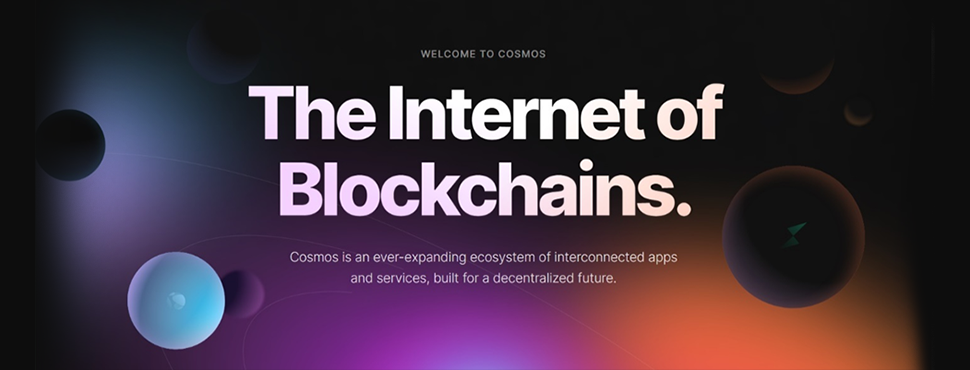
Evolution of the Blockchain World
The first was bitcoin, which has now become a kind of gold – the equivalent of cost and value. This is its only purpose since the first blockchain was imperfect. It doesn’t scale well, is slow, and runs on the now obsolete Proof-of-Work algorithm.
Ethereum has become the second significant solution in the crypto universe. Smart contracts have turned all technology around and made it possible to create a new financial world. However, Ethereum also has big problems. It is limited by its own rules. It is slow due to a large number of transactions and expensive in terms of financial operations. Its exchanges of small amounts hurt the pocket and show little efficiency.
The third generation of blockchains was marked by the release of the Proof of Stake algorithm, Cosmos network, and Polkadot blockchain. They are built on different principles, but they have one goal – to solve the problem of inter blockchain communication and to create an environment for the rapid development and deployment of applications.
How the Cosmos Network Was Created
The first step towards its implementation was made in 2014 by enthusiast Jae Kwon. He researched byzantine fault tolerance (BFT). The search for solutions to this problem has been going on since 1975. It is a mathematical description of fail-safe messaging between nodes so that the system as a whole keeps working.
The technology that solves the problem of byzantine fault tolerance is considered extremely reliable. This solution was used to build aircraft engines, design nuclear power plants, and in traditional finance.
In a blockchain built on many nodes, the implementation of BFT principles is the key to its security. The Tendermint replication protocol was developed based on the Byzantine Consensus Algorithm (BCA). For a block to get into the chain, at least two-thirds of the participants – network validators – must vote for it. At the same time, energy costs are minimized. This technology is very environmentally friendly.
In 2015, All in Bits Inc and Monax combined EVM with the Tendermint consensus engine, “layering” the virtual machine over the protocol. This is how transactions based on smart contracts became available in the network.
At the same time, the blockchain application interface (ABCI) was created, which made it possible to remove restrictions on development languages in the Cosmos ecosystem. It can include DApps written in any programming environment. Using the messaging system, developers can create their blockchain with useful features and deploy it in Cosmos.
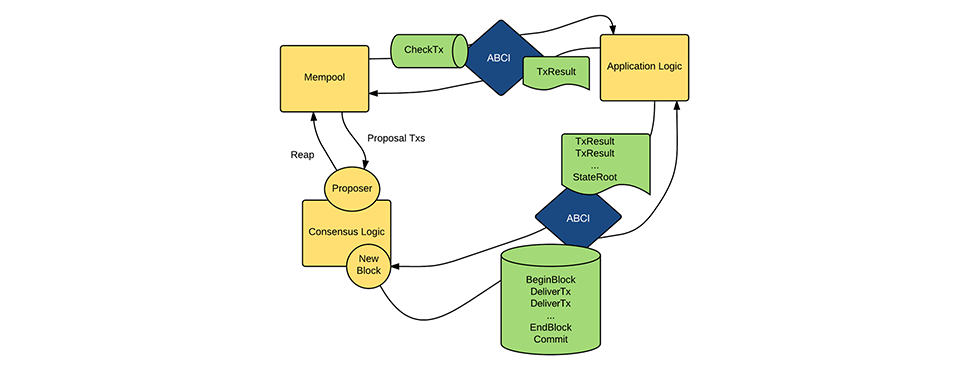
In 2016, the Cosmos white paper was published, for which the developers received the “Most Innovative Project” nomination at the Shanghai Blockchain Week. The solutions were piloted with a contract for a voting system for Cleveland’s Rock and Roll Hall of Fame. The Interchain Foundation (ICF) was created to support and develop the project.
In 2017, an ICO was held, which showed a high public interest in the Cosmos project. In less than half an hour, all available Atom governance tokens were sold out, and funding amounted to $16.8 million. Thus there were funds to refine the design and architecture of the interchain, and the first version of Cosmos SDK was created.
In 2018, the Cosmos network started to work – the first test connections of other blockchains appeared, and applications were deployed. In 2019, the famous Binance Chain appeared, also built based on the Tendermint Core and Cosmos SDK.
And finally, there was Cosmos Hub – a central node that minimized the cost of inter blockchain communication. Cosmos Hub is written on Cosmos SDK. Its code is open for public access on GitHub.
Project Marketing Analysis
Rereading articles from those years, you can notice an extremely rare mention of an upcoming startup, although the Cosmos team has been blogging since 2014. However, 4 articles per year are depressingly small for promotion.
Only since 2017 have they started to publish content regularly. Like many talented developers and mathematicians, the founders of the Cosmos ecosystem did not pay attention to marketing as such.
Considering the milestones in the development of the Cosmos blockchain, we can safely say that they were lucky to be the first. Participation in the Shanghai conference, as well as participation in the meeting of Cryptocurrency Research Group and Crypto-economics, played an important role.
In June 2019, the first Cosmos HackAtom Berlin hackathon was held, where novice and venerable developers could show their skills and come up with new tools and technologies for the Cosmos network. One of the grants went to the WebAssembly Virtual Machine (WASM) project. In 2021, the fourth hackathon took place.
All these conferences and events are designed primarily for developers. The general public did not know anything about the Cosmos network, its capabilities, or the Atom token for a long time. The main marketing strategy is airdrops – distribution of tokens from new projects.
This approach is currently working poorly – competition has grown too much in the environment of decentralized finance and blockchain. It is impossible to become well-known without declaring yourself. Even in the case of innovative ideas, the founders of Cosmos needed to visit significant events in the world of cryptocurrencies and attract users through the reward system.
It is worth noting that, at present, the success of a project depends to a large extent on the number of applications that will be deployed on its platform. If we look at their marketing, the Cosmos team is again doing very poorly, focusing on ease of development and connection. So far, word of mouth can be called the main tool for promoting the project.
According to the data of site analytics systems, the potential of targeted and contextual advertising is not involved, and SEO site promotion is not done. The project is featured on Telegram, Twitter, Reddit, Discord, Riot, and YouTube.
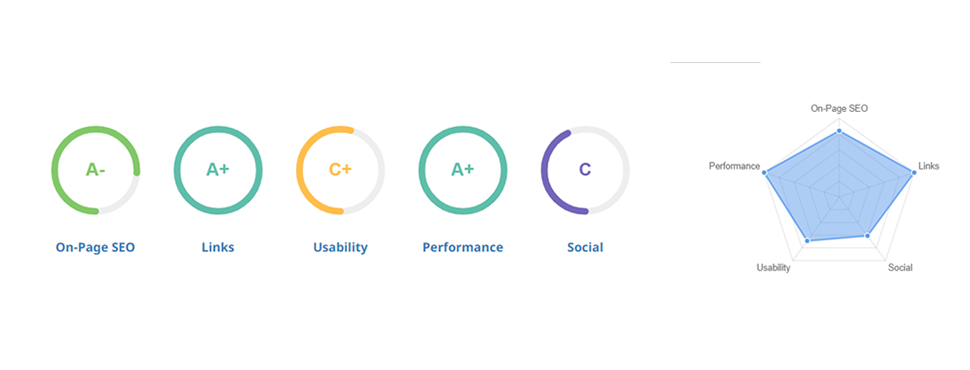
In search engines, the site is visible only for branded queries.
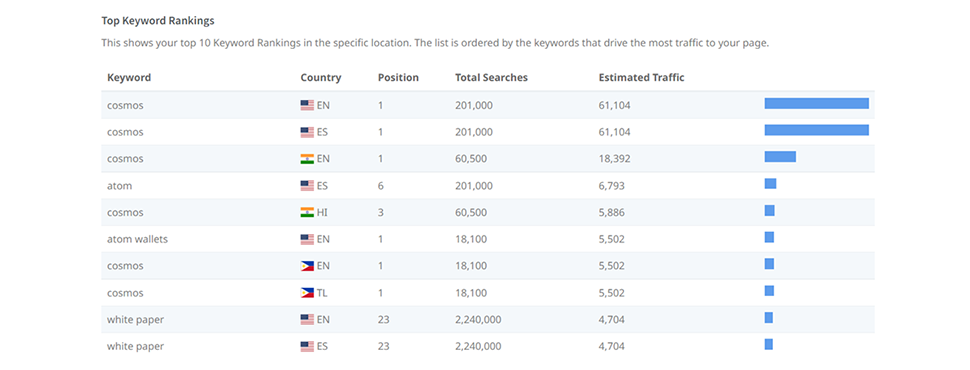
Nevertheless, the high rates of search queries indicate that the project is quite well-known, although for such an ambition, 60,000 visits per day are far from the limit, and this may not be enough for further development. So far, the main sources of information for the general public are the reviews of crypto enthusiasts, and the quarterly media report Cosmos Signal launched in 2021. The first issue had half a million views and attracted a large number of users. But this is thanks to the current Cosmos’ reputation.
In general, platform marketing gives the impression of chaotic and non-systemic activities, but the innovativeness of ideas ensures its success.
How Does Cosmos Work
The platform is built on the Proof of Stake algorithm to achieve maximum security in the chain. The structure is reminiscent of space stations from Sci-Fi movies. In the center, there is a node – the Cosmos Hub.
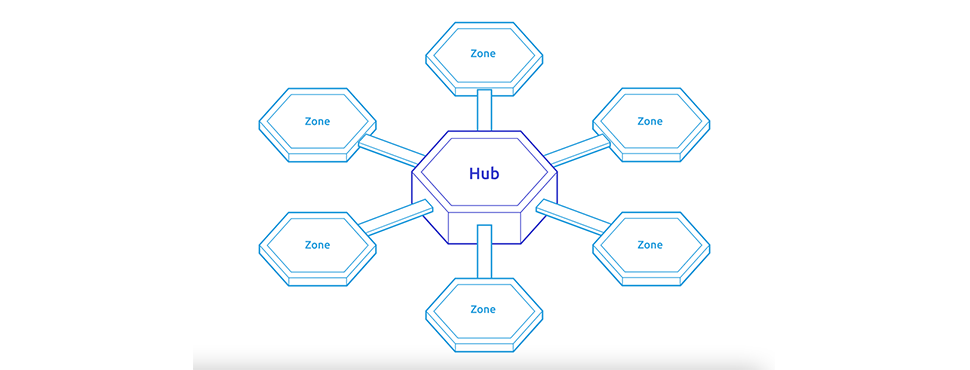
Independent blockchains (Cosmos Zone) are connected to a hub (Cosmos Hub), which is also a blockchain.
Role of the Cosmos Hub
Cosmos Hub is the first hub created in the decentralized network. The founders adopted the principle of building Cosmos from the Internet, where hubs play the role of connecting subnets to each other. At the same time, technologies are not important. The main thing is that a common protocol is supported. The Cosmos Hub is a central registry.
At the beginning of 2022, in addition to the Cosmos Hub, an update of Stargate with Inter Blockchain Communication protocol (IBC) was released. It allows decentralized networks to exchange data with each other, i.e. to make transactions. At the same time, the speed increased by 100 times, and the nodes were synchronized through the Cosmos Hub 96 times faster. Any blockchain can connect to the system through IBC.
How Is the Exchange of Cryptocurrency Done?
When sending a digital asset between Cosmos nodes, the amount is frozen in the sender’s chain blocks, and then it is generated in the recipient’s chain blocks. The main data coordinating unit is the Cosmos Hub. It is fast, inexpensive, and implements blockchain interoperability.
So, Cosmos is the Internet of different blockchains, where the Cosmos Hub ensures the exchange of data between chains that are completely different in technology. Development in the Cosmos ecosystem is mainly done with the help of the Cosmos SDK tools, but this is not a limitation. It’s just that it’s native and convenient, so users choose this option themselves.

To date, the idea of the Cosmos Hub and IBC is considered a major milestone in the development of blockchains, as it allows the implementation of inter blockchain communication while providing security. Payment of transaction fees is made in any digital asset that is used in the transaction or using the native Cosmos Atom token. The incorporation of the Cosmos Hub and inter blockchain communication protocol into the Cosmos ecosystem has led to the growth of different connectable blockchains.
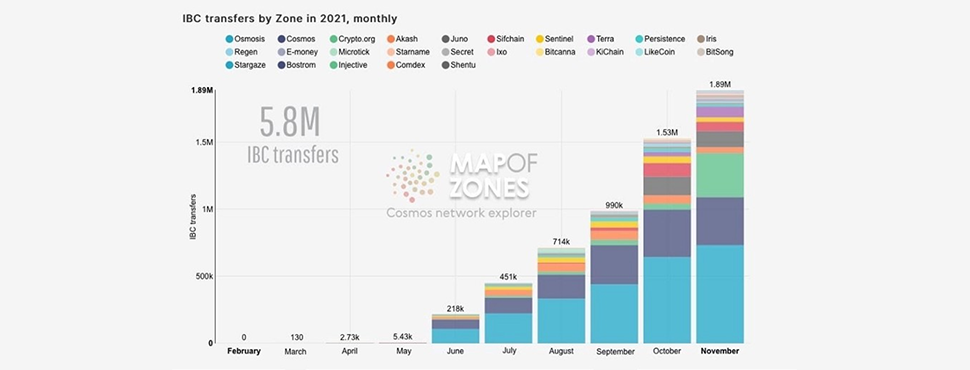
Governance
Cosmos runs on the PoS algorithm – Proof of Stake and is governed by decentralized network validators. The Cosmos Atom governance token is used for staking and voting, as well as payment of transaction fees. To become a validator, you need to buy Cosmos tokens – Atom, deploy a validator node and apply.
Validators need to be powerful enough to function successfully, so getting into governance is quite expensive. Other owners of the native Cosmos Atom token can delegate their rights to official validators for staking Atom coins. For this, they get a part of the income from confirming blocks. Cosmos offers an 11% return. Staking is only available in Atom.
In the same way, Atom owners can allow themselves to be voted for. However, this can lead to monopolization, which is why developers encourage Cosmos Atom holders to regularly change trusted validators. As a result, only decentralization support is centrally managed, which makes the Cosmos ecosystem as close as possible to DAO. You can find the full list of validators at www.mintscan.io.

Atom Governance Token
You can buy Atom coins on all major platforms. At the time of writing, the capitalization was $4,156,148,125. The cost of Atom, according to Coinmarketcap, is $14.69.
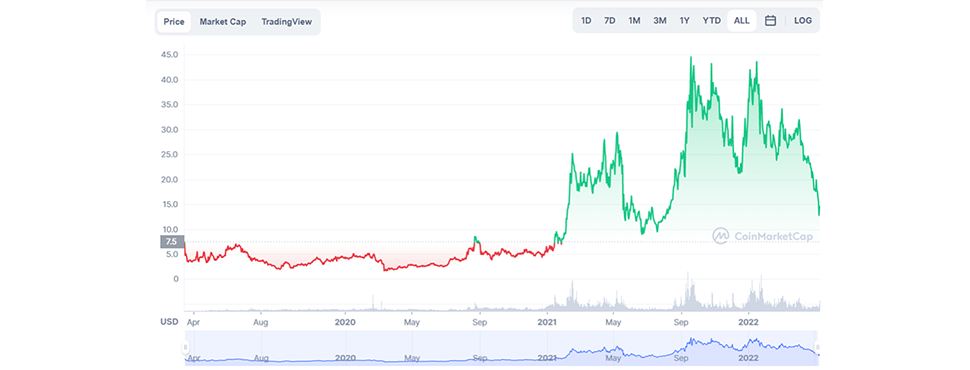
Atom owners can block it in the system, getting passive income. Atom also gives the right to vote. You can buy Atom for real-world assets on the Binance, CoinBase, Huobi, and many other exchanges. A complete list of platforms is available on the Cosmos project website.
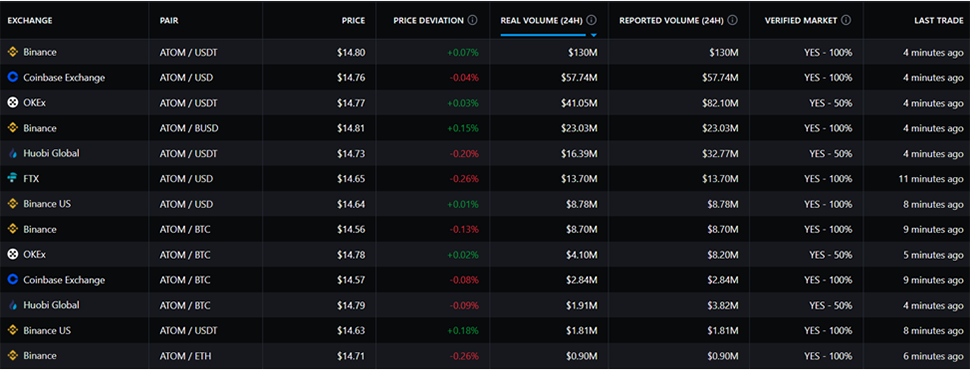
Those who want to make money on trading can evaluate the current metrics.
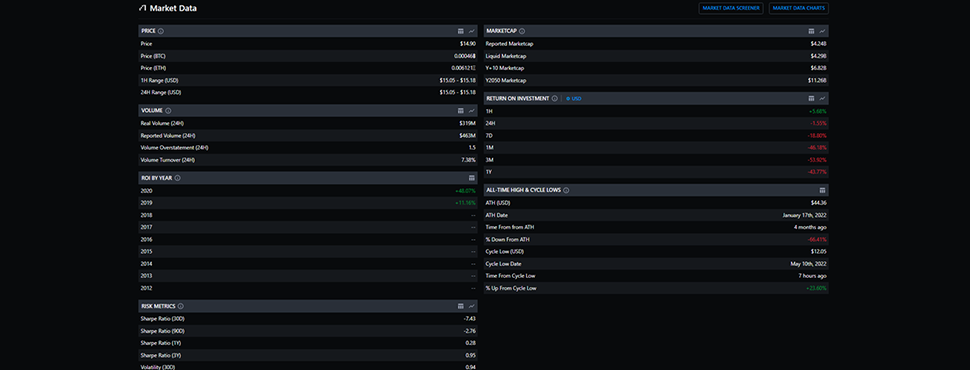
35 wallets support Cosmos Atom. Among them are Wallet.io, Ledger Live, AirGap, etc. There is your own Cosmos network wallet – Cosmostation, which allows you to buy Atom. In addition to the transactions validator (the wallet itself), it includes a bridge for joining the interchain and an interface for holders that shows information about transactions and blocks.
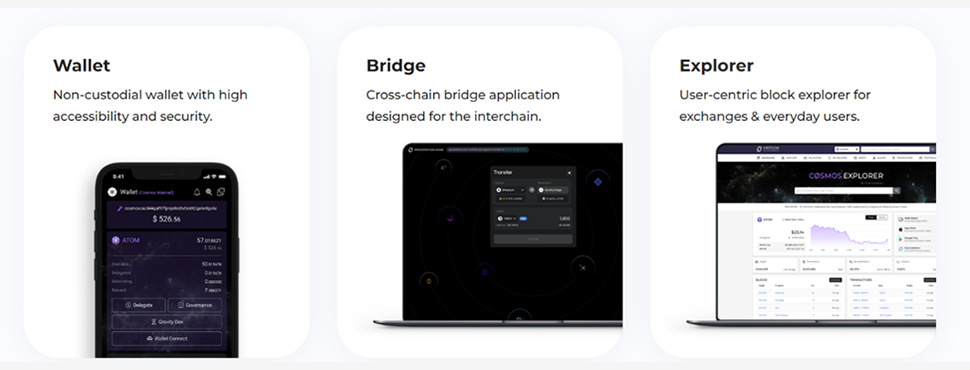
Smart Contracts in Cosmos
To support the development of smart contracts in the Cosmos network, the CosmWasm platform was created. Technically, it is a module that can be easily connected to the Cosmos SDK to implement smart contracts in your blockchain or application. The developers have access to tools “out of the box” to deploy their networks faster and easier. The language for writing contracts is RUST.
In essence, WASM is an intermediate layer for compiling software from the developer’s language for a virtual machine. This ensures support for a wide variety of development systems. A distinctive feature of WASM is the ability to write code in transactions rather than overloading the entire Cosmos chain, which increases the speed of deploying new features.
Projects in the Cosmos Ecosystem
More than 265 projects built have already been created or connected to the Cosmos network, including Binance Chain. Most of the platforms belong to the universe of decentralized finance and are designed for trading and staking. You can actively participate in them or get passive income.
All numbers presented in the review are valid at the time of writing.
OSMOSIS
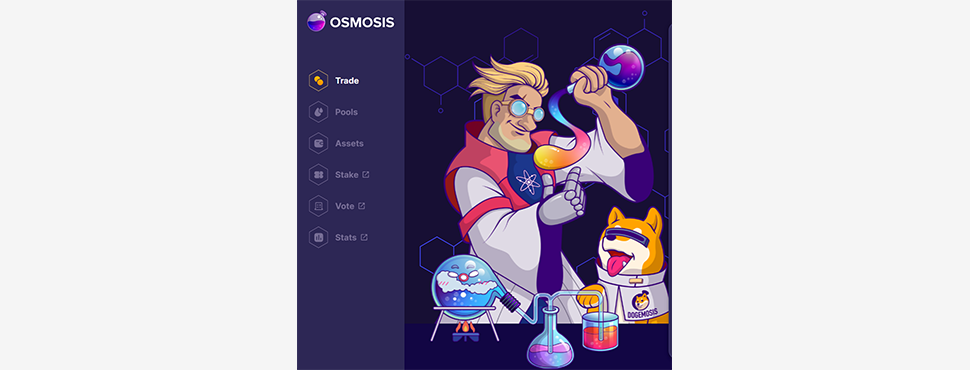
A classic automated market maker with liquidity pools launched in late 2021. The developers call its release a key development of the Cosmos ecosystem.
Total blocked amount is $684,313,913. The trading volume is $124,419,414. The top tokens include the site’s native token Osmo, Atom, and lesser-known tokens. You can buy Atom and other tokens here.
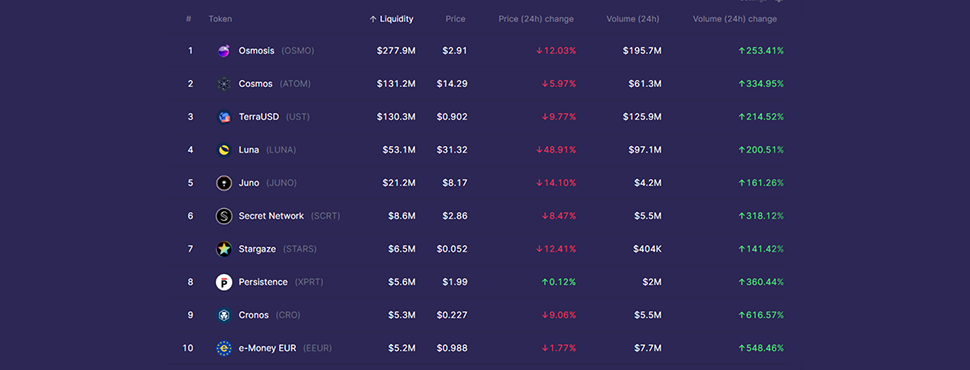
In the liquidity pool, you can block a couple of tokens and get a high yield.
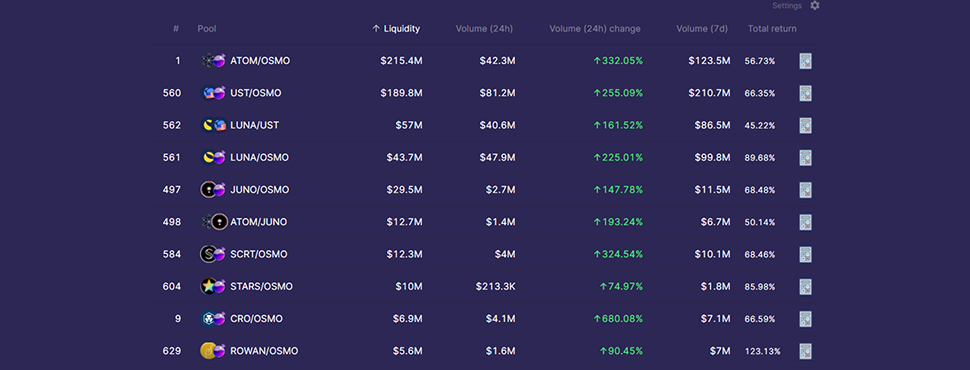
An interface for viewing links between different blockchains is available.
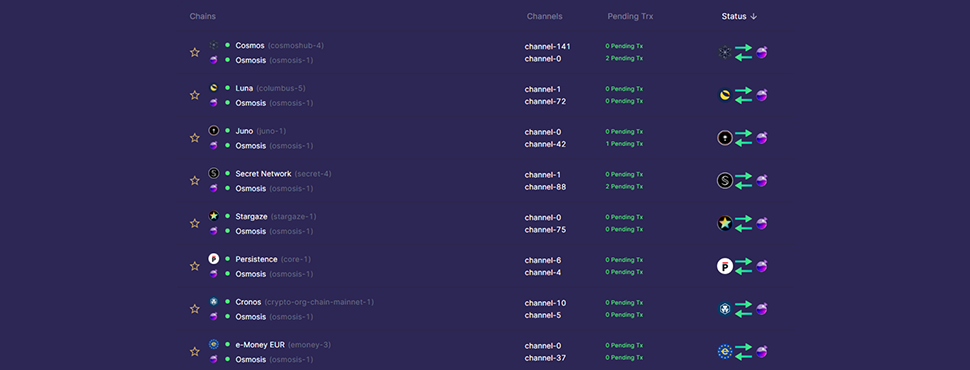
You can’t call project OSMOSIS innovative, but it’s a viable DeFi platform.
Osmo governance token is trading at just under $3.

Injective
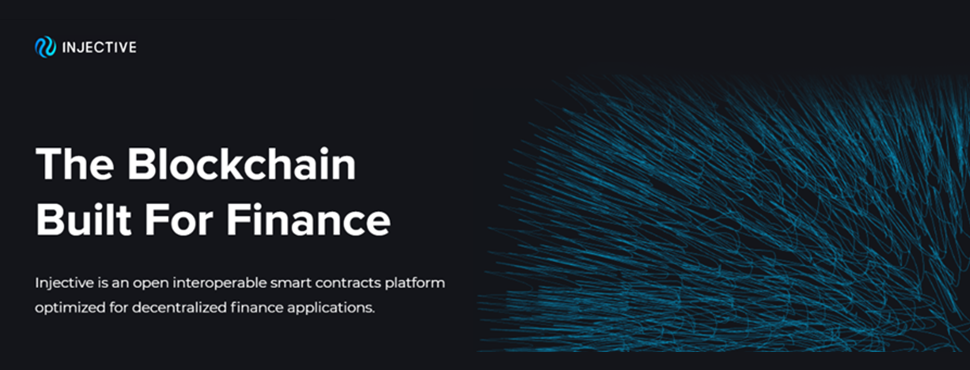
Ethereum-compatible platform with smart contracts enabling trading with derivatives, NFTs, and more. It has all the advantages that Cosmos gives: blockchain interoperability, low transaction fees, the ability to write smart contracts, security, etc.
Such exchanges as Injective Pro, Picasso, Frontrunner, Lunatics Exchange, INJ Dojo Exchange, and MarsX run on it. It is mainly designed for developing and deploying your DApps.

Kava
This blockchain takes the 26th place and is built in the Cosmos universe. Its main task is to combine Ethereum and Cosmos.

In August 2021, AMM KavaSwap was released. It also includes KavaMint services for USDT credit production, KavaLend – lending protocol, Elfin Kingdom play-to-earn game, and Formation.fi farming platform.
Sifchain
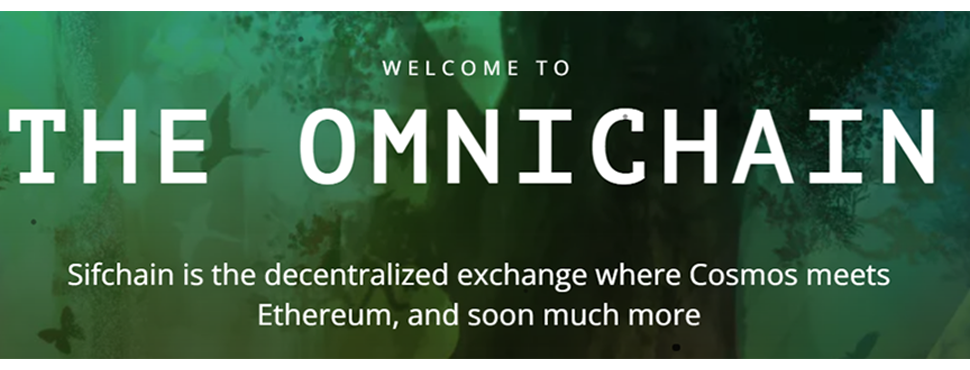
It is a blockchain designed to be compatible with Ethereum. It is notable for the introduction of the Peggy bridge, which uses pegged tokens to easily exchange ether for coins of the Cosmos ecosystem.
Regen Network
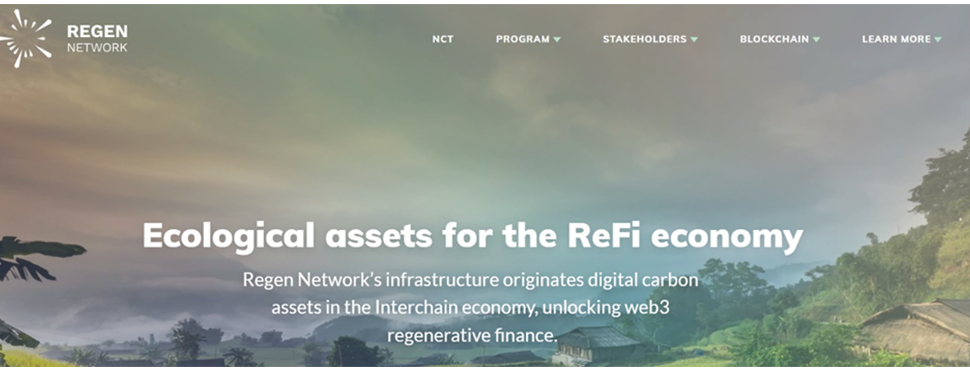
This is one of the environmental projects built in the Cosmos network. The Regen engineer was the WASM developer at the hackathon.
Cosmos positions itself as an environmental project, so ideas that combine technology and nature protection receive grants. Regen Network positions itself as an environmental accounting system. All people interested in climate conservation interact within the system, from scientists to farmers working on the soil regeneration system.
Alternative Platforms for Hosting Decentralized Applications
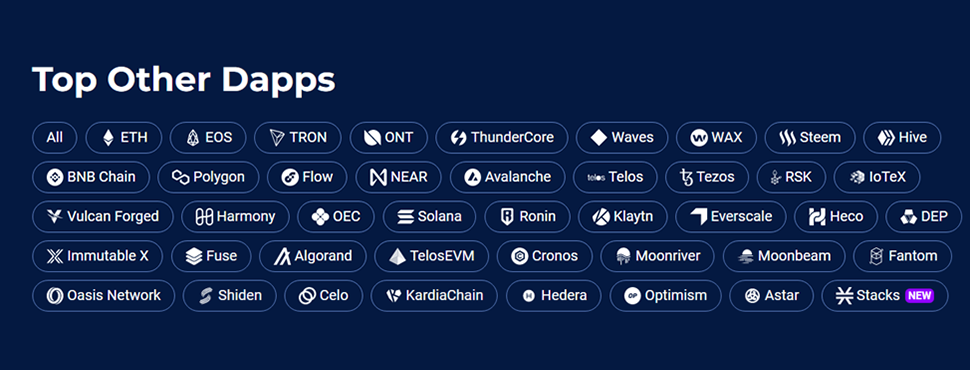
Cosmos competitors are both networks, for example, Ethereum, on which major exchanges are currently deployed, and other DApps that are designed to convert tokens. However, the implementation of a full-fledged ecosystem is possible either on your own or on an existing blockchain. Let’s consider the most popular platforms for hosting your projects.
TRON
The basic blockchain implements scalability, high transaction speed, and minimal transaction fees. It has run since 2017. PandoraDEX exchange runs on it.
Polkadot
A parachain that, like Cosmos, should implement a simple inter blockchain communication. Although it is still in the development stage, the project is quite well-known.
Polygon
A popular hosting for projects built. It offers very low transaction fees. SushiSwap, UniSwap v3, Crypto Punks 2 run on it. It is supported by leading NFT marketplaces, including OpenSea.
EOS
This platform has an ambitious goal of overtaking Ethereum. Initially, it was created as an alternative – a blockchain with support for smart contracts but with high transaction processing speed and scalability. It is built on the Delegated Proof of Stake algorithm. Upland, PROSPECTORS, and AtomicAssets are deployed on it.
Why DeFi Needs Marketing
You can check the answer to this question yourself by analyzing DApps statistics on dappradar.com. Decentralized finance applications are released every day. There are more than enough platforms for their creation, and the competition is growing. For example, let’s consider the list of DApps for the EOS blockchain.
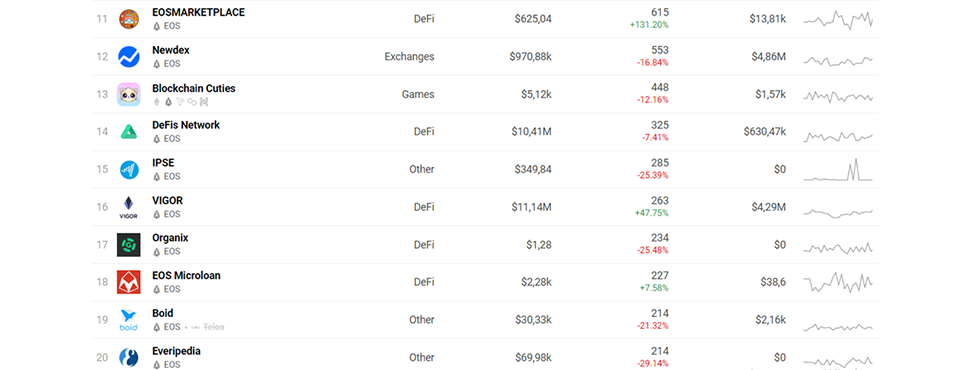
The number of users in the second ten does not exceed 1,000. This number is too little to develop a successful business and return the investment. Therefore, project promotion is perhaps the most important part of its development. This is especially necessary if the idea is not based on innovative proposals for blockchain technology.
We at ICODA specialize in marketing startups and decentralized applications already running on the EOS platform. Extensive promotion experience necessarily reflects the fact that projects with a carefully developed marketing strategy are much more successful and become known even at the idea stage. This helps to collect investments for further development.
The ICODA marketing mix includes:
- Generating the company’s development strategy;
- PR campaign to promote the brand;
- Promotion on YouTube through the best bloggers;
- Media and content marketing on leading platforms.
In addition, we will prepare documents for listing on cryptocurrency sites, including Coinmarketcap.
Our main task is to ensure maximum recognition of your brand and inform the general public about the benefits of your project.



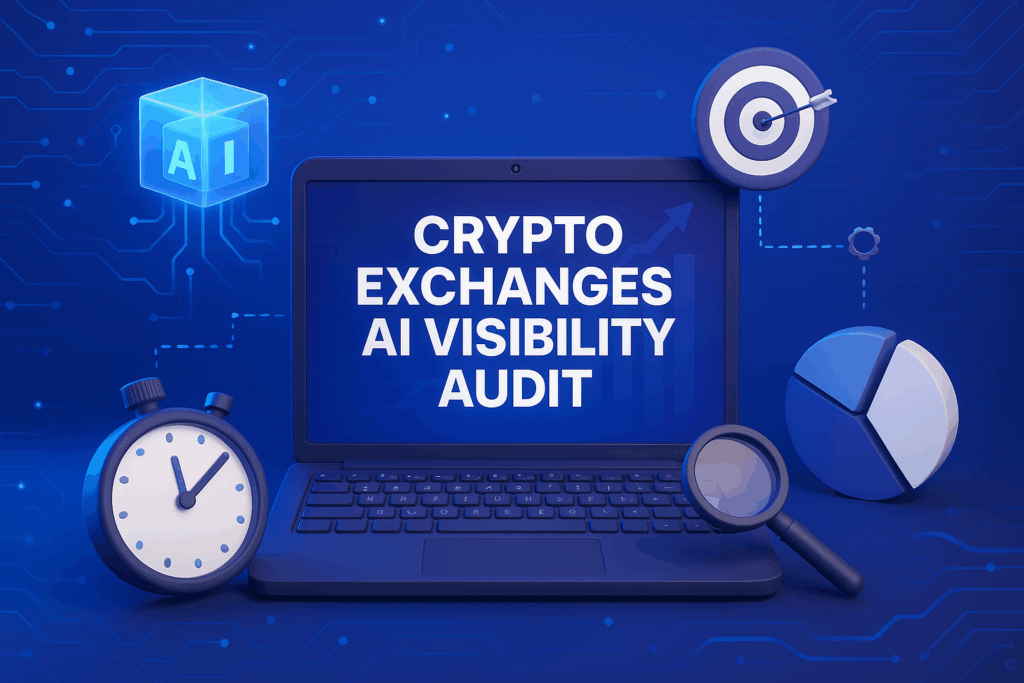

![CONF3RENCE 2025: Leading Web3 & AI Event [Promo Code ICODA20]](https://icoda.io/wp-content/uploads/2025/06/6203-23-1024x580.png)



